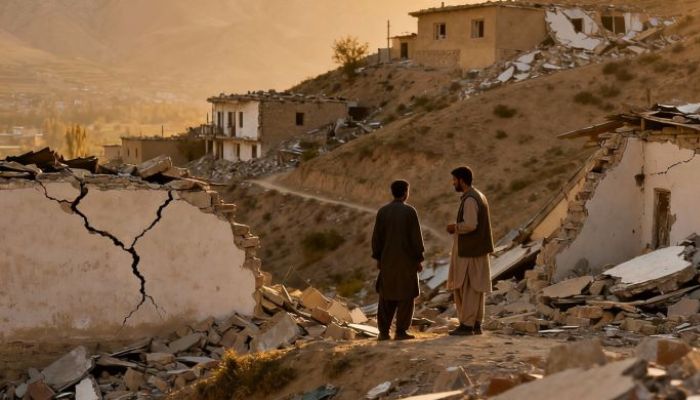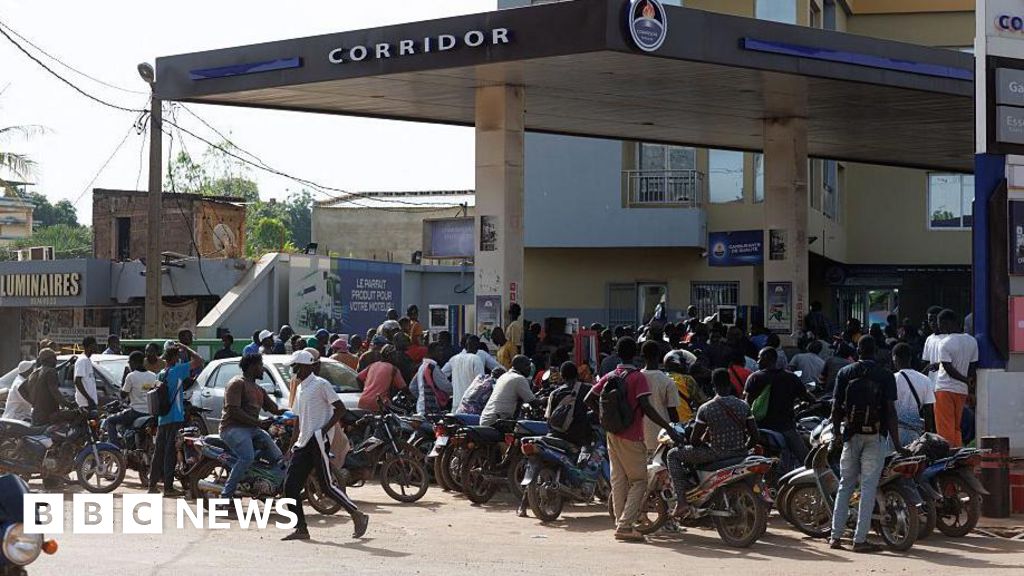355 tremors in 35 years, 12,000+ deaths: Why Afghanistan is prone to earthquakes and struggles with timely relief
On Monday (3rd November 2025), a 6.3 magnitude earthquake struck Afghanistan. The epicentre was in the Kholm area near Mazar-e-Sharif in northern Afghanistan. The earthquake’s depth was reported 28 kilometres. Seven people are reported to have died so far. In September, , a powerful earthquake struck eastern Afghanistan, killing 2,200 people. The tremors, which struck on 3rd November, were felt across Afghanistan as well as parts of Tajikistan, Uzbekistan, and Turkmenistan. – A 6.3-magnitude earthquake struck near Mazar-e Sharif in northern Afghanistan early on November 3, 2025, at a depth of 28 km (17.4 miles), affecting a city of about 523,000 people. At least seven people were killed and around 150 injured, according to provincial… pic.twitter.com/p5pRRsX9iq— The Informant (@theinformant_x) November 3, 2025 Why is Afghanistan vulnerable to earthquakes? Between the years 2020 and 2025, Afghanistan has been struck by numerous earthquakes. Many of these were of magnitudes of 6.0 or greater. At least 50 earthquakes have been recorded in five years, according to geological agencies and news reports. According to a Reuters report, at least 355 earthquakes with a magnitude of 5.0 or greater have struck Afghanistan since 1990. Over the past 35 years, earthquakes have killed more than 12,000 people. Official statistics show that earthquakes kill an average of 560 people each year in Afghanistan, resulting in economic losses of approximately $80 million (approximately ₹660 crore). The cause behind this is analysed to be that Afghanistan is located in a seismic zone where the Indian tectonic plate collides with the Eurasian plate. This collision gives rise to the Hindu Kush and Pamir Mountain ranges that extend to the north and east. Source: USGS report Tectonic plates are large slivers of rock beneath Earth’s surface that slowly move out of place. These plates, 50 to 250 kilometres thick, lie within Earth’s upper layer (lithosphere). Beneath these plates lies a layer of hot, fluid material called the asthenosphere. When these plates collide, move apart, or move past each other, events such as earthquakes, volcanoes, or mountain formations occur. The Indian Plate is moving from south to north. Meanwhile, the Eurasian Plate, located to the north, is colliding with the Indian Plate. Furthermore, the Arabian Plate is moving southwest and exerts a small influence. The Hindu Kush region of Afghanistan frequently experiences earthquakes at depths of approximately 100,000 km. These earthquakes cause minimal damage at the Earth’s surface. However, as the depth decreases, the tremors become stronger and more damaging. The region surrounding Afghanistan is crisscrossed by numerous active fault lines, which regularly trigger moderate to severe earthquakes. Afghanistan’s geographical location makes it naturally prone to earthquakes. In five years, Afghanistan lost thousands of lives in earthquakes Afghanistan has been hit by several devastating earthquakes over the past five years. In October 2023, two magnitude 6.3 earthquakes struck the Herat region, killing over 1,000 people and injuring over 2,000. In August 2025, a magnitude 6.0 earthquake struck eastern Afghanistan, causing over 500 deaths. In November 2025, a magnitude 6.3 earthquake struck the Kholm region, killing four people and injuring over 60. On 12th April 2025, a magnitude 5 earthquake struck Pakistan at a depth of 39 km. Furthermore, on April 16th and 19th, earthquakes of magnitudes 5.6 and 5.8 occurred in the Hindu Kush region and along the Afghanistan-Tajikistan border. Subsequently, on May 10th and June 29th, earthquakes of magnitudes 5.7 and 5.5 struck Pakistan. These also affected Afghanistan. Then, on August 27, a 5.6 magnitude earthquake struck the Hindu Kush region of Afghanistan, and on August 19th, a 5.2 magnitude earthquake struck at a depth of 186 km. On September 1, a magnitude 6 earthquake struck Afghanistan, killing more than 800 people. Previously, in 2024, a magnitude 5 earthquake struck the Afghanistan-Tajikistan border region on January 5th. This was followed by a magnitude 6.3 earthquake in the Hindu Kush region of Afghanistan on January 11th. Then, on October 17th, another magnitude 5.5 earthquake struck the same region. A magnitude 5.8 earthquake struck Afghanistan’s Hindu Kush region on January 5th, 2023. A magnitude 6.5 earthquake struck northern Afghanistan in late March, killing 13 people. Subsequently, on May 3rd and August 5th, another earthquake of magnitude 5.6 and 5.7 struck the Hindu Kush region. On August 6, a magnitude 5.1 earthquake struck the Afghanistan-Tajikistan border. Several earthquakes in Afghanistan in October killed several people. On November 15th, a magnitude 5.3 earthquake struck the Afghanistan-Tajikistan border region. In 2022, a magnitude 5.6 earthquake struck western Afghanistan on January 17th at a depth of 30 km. A magnitude 5.7 earthquake st



On Monday (3rd November 2025), a 6.3 magnitude earthquake struck Afghanistan. The epicentre was in the Kholm area near Mazar-e-Sharif in northern Afghanistan. The earthquake’s depth was reported 28 kilometres.
Seven people are reported to have died so far. In September, , a powerful earthquake struck eastern Afghanistan, killing 2,200 people. The tremors, which struck on 3rd November, were felt across Afghanistan as well as parts of Tajikistan, Uzbekistan, and Turkmenistan.































































































